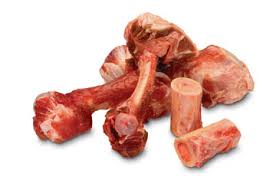The First Thing We Talk About When We Talk About Dental Care
Love your pet? (We know you do!) The best way to express your fondness for your furry one is to love them from the inside out. So don’t worry too much about buying the latest heart-shaped squeaky or catnip toy (unless it will energize you to play more with your dog or cat). Instead, we try to encourage our customers to consider making positive shifts in their pet’s diet and health care. As February, the month of love, is also Dental Month, it’s a great time to look at ways to build on your pet’s health and vitality by working on your home dental care routine. Dental care is usually the weakest link for pet owners when it comes to their pets’ health care.
 The reason is pretty obvious, but we’ll mention it here in case you feel alone: most dogs and cats don’t like their mouths being messed with. And pet parents don’t like forcing their pets to do something they really don’t want to do. We want to make our pets happy, and enjoy our time with them, so probably the last thing we want to make time for is the often futile attempt to get a toothbrush into our pets’ mouths.
The reason is pretty obvious, but we’ll mention it here in case you feel alone: most dogs and cats don’t like their mouths being messed with. And pet parents don’t like forcing their pets to do something they really don’t want to do. We want to make our pets happy, and enjoy our time with them, so probably the last thing we want to make time for is the often futile attempt to get a toothbrush into our pets’ mouths.
Brushing though is a really important part of a good dental care routine, and we’ll talk about in the next post. This month as we single out our favorite and most popular oral care solutions in a series of blog posts, we’ll talk about why you should consider them, and how you can integrate them into your feeding, hygiene or play routines.
We’ll start the conversation with one of our primary dental care solutions: raw bones. Raw bones fall into two categories: recreational, meaning for gnawing and chewing but not entirely consumed, as in marrow and femur bones; and edible (also referred to as ‘meaty’), meaning that the bones and cartilage are soft enough to be crunched into small pieces and swallowed and digested. Both types of raw bones can be part of your oral care routine.

Why do we typically talk about raw recreational and edible bones first when we talk to customers about dental care? For 3 main reasons. One, the mechanical abrasion and gumline stimulation provided by the bone and sinew scrapes plaque and flosses around teeth as your dog or cat chews them. Two, the Ph and live enzymes of raw bones helps to break down plaque and prevent tartar from forming (on the other hand, starchy foods, on the other end of the Ph spectrum, predispose the saliva toward accumulation of tartar). And three, pets take to them naturally. For the most part anyway!….cats may need some adjustment time. Cats are known to imprint their dietary preferences at a young age based on what they were accustomed to being fed, which is why they are often more challenging when it comes to diet changes. Presented with a raw chicken back or wing for the first time, a cat may think it’s a toy, and play with it rather than chew on it.
So how often, and how, to feed raw bones to your pet? With dogs, it’s important to consider how she or he chews, and his or her mouth size, when selecting a raw bone. If you have a gentle chewer, a dog who will lick and gnaw on a bone for hours without having much impact on the bone, then you can choose almost any kind of recreational or edible meaty bone, as long as you consider size and ability to digest fat. For an aggressive chewer, or a dog who is in a hurry to get whatever he or she is chewing (or not chewing!) into the belly as fast as possible, you’ll have to be extra careful to choose an appropriately sized bone, and to monitor while he or she is chewing to be sure it’s taken away if it becomes too small and that they don’t ingest too much in one sitting. One rule of thumb in regard to size is to choose a bone at least as big as his or her head, so that it can’t be swallowed. A big knuckle bone is a good choice for a Lab for example, or any size aggressive chewer. With any aggressive chewer of any size, you’ll need to take the bone away after say an hour or two maximum. Too much bone consumed in one sitting can cause an obstruction in the digestive system, or at the very least, constipation.
And fat content matters too. The most popular raw bones, marrow bones, can be up to 60% fat due to the rich marrow in the center. If your pet has a history of pancreatitis like my dog Zip, either scrape out the marrow (try replacing with canned pumpkin and then freeze before feeding) or choose something like a lamb or bison femur, and roll the bone in enzyme powder like Animal Essentials Plant Enzymes & Probiotics to help ensure that any fat left on the bone doesn’t stress the pancreas. And pets without a history of pancreatitis can develop it if they are given too much fat suddenly, and they aren’t used to being able to metabolize it. Pancreatitis cases we’re told spike upwards at the vet’s offices at Thanksgiving, when dogs are often given a ‘treat’ of the turkey skin or other very fatty food, and it overloads the pancreas’s ability to secrete enough lipase to digest it. We definitely recommend talking to an integrative veterinarian who specializes in nutrition if this is a concern.
Meaty edible bones like poultry necks and backs have more stringy, sinewy bits and cartilage that can stimulate the gums even between teeth, removing or retarding plaque in hard to reach places. Dogs and cats once introduced typically love not only the meat but the exercise to their jaws, and the stimulation it provides over eating their meal from a bowl. To introduce raw meaty edible bones to your dog or cat, you can try piercing the fascia or skin on the outside to give them a start, or even heating the exterior (as in a flash sear for literally a few seconds) at first so they recognize it as food, then substituting completely raw as they catch on. You have to be careful here not to actually cook the bones, as cooked bones will splinter and are not safe.
How often to feed raw bones? It depends on the kind of bone, and the diet and activity level of your pet. Pets on a completely raw diet are typically given a raw meaty bone as their entire meal once a week. Marrow bones, with the marrow spooned out, can be given more often, especially if you take the bone away after an hour or two. Pets need to chew, both to relieve boredom and stress (excitement is also stress) and to exercise their jaw and neck muscles. You can tap into this natural desire to chew as the foundation of your oral care routine. Then once you’ve got some positive momentum (you’ve got this!), you’ll be ready to take on the most important part of the solution: brushing. We’ll talk about that next.
